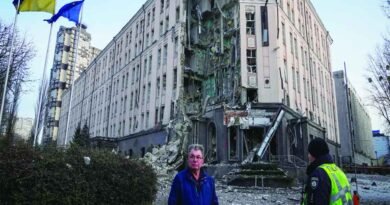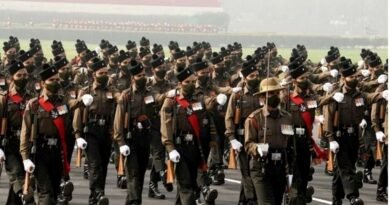Exempt Nepalese from Agniveer
The Agniveer scheme has caused widespread resentment in Nepal and is yet to be approved by the Nepal government.
There has been no recruitment for armed forces from 2020 – till end-2022 – when Agniveer was implemented. The reason given was the Covid pandemic but there was a fiscal method to this madness. The Agniveer idea was bizarre. Not a single veteran has approved it. So how did this harebrained project see the light of day? It is claimed, including by Congress MP Rahul Gandhi in Parliament, that he was told it was NSA Ajit Doval’s baby. Another scary idea attributed to Doval was about ending the recruitment of Nepali-domiciled Gorkhas (NDGs) and raising homegrown Indian Domiciled Gorkha (IDG) regiments. Originally Agniveer excluded NDGs and was applicable to Indians and IDGs only. A former Army Chief says it was Doval’s idea to raise the exclusive IDG 6/1 Gorkha Rifles in 2016 to signal to Nepal that India could sustain its Gorkha Brigade without NDGs. Extending Agniveers to NDGs was an afterthought to let Nepal kill the project. For Indian Gorkha veterans, sadly the Gorkha connection may be approaching a sad ending despite CDS Gen Anil Chouhan being a Gorkha officer.
The ex-servicemen in Nepal have rejected out of hand, the four-year Agniveer scheme which has caused widespread resentment and has not been approved by the Nepal government due to elections and the early fall of the new government resulting in no discussion on Agniveer in the Parliamentary foreign affairs committee. The latest glitch is there is now no foreign minister and a cabinet reshuffle has been embargoed by Election Commission till 19 March after Prime Minister Prachanda secures a vote of confidence in Parliament after the election of the President on 9 March. One can assume that if all goes well for Prachanda, a discussion and decision on Agniveer will occur only by the end of March at the earliest.
The first batch of Agniveers was recruited in December last year and is currently under training. There was no recruitment of NDGs and only IDGs as per 60:40 proportion were done. But serious difficulties were encountered in locating IDGs who qualified as per established standards. So, for some time, 5 and 8 Gorkha Rifles regiments had to recruit Kumaonis and Garhwalis in lieu of IDGs. According to recruitment authorities, IDGs are now meeting the required standards and being recruited. Serving soldiers are privileged to recruit through regimental training centres, their sons and brothers through Unit Headquarter Quota. That figure for this year for Gorkhas is 76 but the Nepalese government did not clear such candidates. COAS Gen Manoj Pande was prepared to double the 76 quota due to the delay in Nepal being able to approve Agniveer but our own MEA did not sanction this. Incidentally, the first tranche of 360 NDG vacancies was given to IDGs.
Last month, the Gorkha Brigade celebrated its annual meetings in Delhi with insufficient knowledge about the likelihood of Nepal sanctioning the Agniveer scheme. Gen Chauhan who had invited Gorkha veterans for an interaction was himself absent, apparently ordered to attend the UP Defence Corridor meeting when his meeting with veterans was planned a month earlier. The autonomy of the highest military officer was circumscribed by political imperatives.
Foreign Secretary Vinay Kwatra who was ambassador to Nepal before assuming his current office was in Kathmandu, last month following a blitzkrieg of visits from the US led by Under Secretary of State for Political Affairs, Victoria Nuland after Prachanda became Prime Minister. Kwatra met almost every political party except leaders from Janata Samajwadi Party Ashok Rai and Upendra Yadav. The US, like India, was concerned about the evolving Left alliance of erstwhile adversaries Oli and Prachanda. That house of cards collapsed and severely disappointed the Chinese.
The Nepali Congress which was left out in the cold despite being the single largest party in Parliament played
its cards badly forcing Prachanda to jump ship and join the Oli alliance. NC was to hold no office in parliament except the leader of the opposition and without chief ministership of a single of seven provincial governments. This time, Oli tripped insisting upon his choice of the president giving Prachanda the opportunity to return to the democratic alliance led by Sher Bahadur Deuba.
In Shillong’s 58 Gorkha training centre, IDGs are training to become Agniveers which according to Prime Minister Modi will transform them into patriotic and tech-savvy Indians, returning to society after four years in the military. Patriotic no doubt, but how they will become tech savvy no one knows as archaic training devices in training centres have not been replaced with state-of-the-art simulators and other gadgetry.
The truncated training period for Agniveer of 31 weeks and subsequently 6 weeks of training in the units followed by the requisite orientation training at counter-insurgency battle schools is insufficient to field a soldier in battle. It is likely NDGs will miss the bus again due to political instability though chances of Agniveers being accepted by an NC-led alliance are brighter than with the Oli alliance. Still, the simplest way to greenlight NDG recruitment is to exempt 1000 Nepalese annually from Agniveer which was Doval’s original plan – of excluding them from it. But let not the long-nurtured strategic Gorkha bonding be disturbed as it is the foundation of the pro-India constituency in Nepal.
(The writer, a retired Lt Gen, was Commander, IPKF South, Sri Lanka, & founder member of the Defence Planning Staff, currently the Integrated Defence Staff; views expressed are personal)
Source: The Pioneer




